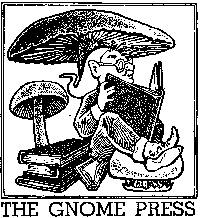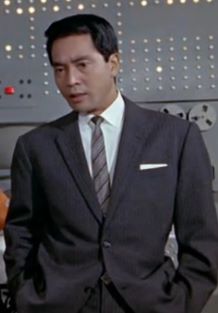| |||
|---|---|---|---|
| +... | |||
| Years in film |
|---|
 |
| 19th century |
| 1870s |
The decade of the 1950s in film involved many significant films.
| |||
|---|---|---|---|
| +... | |||
| Years in film |
|---|
 |
| 19th century |
| 1870s |
The decade of the 1950s in film involved many significant films.
Films of the 1950s were of a wide variety. As a result of the introduction of television, the studios and companies sought to put audiences back in theaters. They used more techniques in presenting their films through widescreen and big-approach methods, such as Cinemascope, VistaVision, and Cinerama, as well as gimmicks like 3-D film. Big production and spectacle films were perfect for this gained popularity, with the many historic and fantasy epics like The Robe (1953), The Story of Robin Hood and His Merrie Men (1952), The Ten Commandments (1956), The Seventh Voyage of Sinbad (1958), and Ben-Hur (1959). Other big-scoped films thrived internationally, too, such as Soviet fantasy director Aleksandr Ptushko's mythological epics Sadko , Ilya Muromets , and Sampo , and Japanese director Akira Kurosawa's historic Seven Samurai , Throne of Blood , and Rashomon . Toshiro Mifune, who starred in those Kurosawa films, also starred in the color spectacle Samurai Trilogy .
This spectacle approach, coupled with Cold War paranoia, a renewed interest in science from the atomic bomb, as well as increased interest in the mysteries of outer space and other forteana, lent itself well to what this film decade is best known for, science fiction. The science fiction genre began its golden age during this decade with such notable films as The Day the Earth Stood Still (1951), The Thing from Another World (1951), The War of the Worlds (1953), It Came from Outer Space (1953), Creature from the Black Lagoon (1954), Them! (1954), This Island Earth (1955), Earth vs. the Flying Saucers (1956), and Forbidden Planet (1956), as well as Japanese science fiction tokusatsu films. There were also Earth-based "sci-fi" subjects, including kaiju films such as the Godzilla series as well as 20,000 Leagues Under the Sea (1954) and When Worlds Collide (1951). Companies such as American International Pictures, Japan's Toho, and Britain's Hammer Film Productions were created to solely produce films of the fantastique genres.
The decade was equally adept at both character and realistic films. The highly noted actors James Stewart, John Wayne, and Marlon Brando were at the peak of their popularity. Stewart, starring in Winchester '73 , and Wayne, starring in John Ford's Cavalry Trilogy and The Searchers , revitalized the western. Brando mastered versatile roles in films such as A Streetcar Named Desire , The Wild One (1953), Julius Caesar , On the Waterfront (1954), Guys and Dolls (1955), The Teahouse of the August Moon (1956), and Sayonara (1957).
Director Alfred Hitchcock was at the peak of his craft, with films such as Strangers on a Train (1951), Dial M for Murder (1954), Rear Window (1954), To Catch a Thief (1955), The Man Who Knew Too Much (1956), Vertigo (1958), and North by Northwest (1959), with James Stewart and Grace Kelly starring in three each. The Bengali Indian director Satyajit Ray, who began his career in the 1950s, was also at the peak of his career during this decade, with films such as The Apu Trilogy (1955–1959), Jalsaghar (1958), and Parash Pathar (1958).

The cinema of Japan, also known domestically as hōga, has a history that spans more than 100 years. Japan has one of the oldest and largest film industries in the world; as of 2022, it was the fourth largest by number of feature films produced, producing 634 films, and third largest in terms of box office revenue, standing at $1.5 billion. Films have been produced in Japan since 1897.

Richard Burton Matheson was an American author and screenwriter, primarily in the fantasy, horror, and science fiction genres.

Takashi Shimura was a Japanese actor who appeared in over 200 films between 1934 and 1981. He appeared in 21 of Akira Kurosawa's 30 films, including as a lead actor in Drunken Angel (1948), Rashomon (1950), Ikiru (1952) and Seven Samurai (1954). He played Professor Kyohei Yamane in Ishirō Honda's original Godzilla (1954) and its first sequel, Godzilla Raids Again (1955). For his contributions to the arts, the Japanese government decorated Shimura with the Medal with Purple Ribbon in 1974 and the Order of the Rising Sun, 4th Class, Gold Rays with Rosette in 1980.

Kamatari Fujiwara was a Japanese stage and film actor who appeared in over 200 films between 1933 and 1984. In addition to regular appearances in the films of Akira Kurosawa, he worked for directors such as Mikio Naruse, Yasujirō Ozu, Heinosuke Gosho and others.

Setsuko Hara was a Japanese actress. Though best known for her performances in Yasujirō Ozu's films Late Spring (1949) and Tokyo Story (1953), she had already appeared in 67 films before working with Ozu. She is widely considered to be one of the greatest Japanese actresses of all time.

Motoko Yano, better known as Machiko Kyō, was a Japanese actress who was active primarily in the 1950s. Considered one of Japan's first sex symbols and one of its greatest screen actresses, Kyō is best known for her critically acclaimed work with directors Akira Kurosawa, Yasujirō Ozu, Kenji Mizoguchi, Mikio Naruse, Kon Ichikawa, Teinosuke Kinugasa, Kōzaburō Yoshimura, Shirō Toyoda and Hiroshi Teshigahara, appearing in films such as Rashomon, Ugetsu, Gate of Hell, Street of Shame, Floating Weeds, Odd Obsession and The Face of Another.

John Gilling was an English film director and screenwriter, born in London. He was known for his horror movies, especially those he made for Hammer Films, for whom he directed The Shadow of the Cat (1961), The Plague of the Zombies (1966), The Reptile (1966) and The Mummy's Shroud (1967). Elsewhere he directed Cross of the Devil (1975), among others.

Eiichi Ono, better known by his stage name Kōji Tsuruta, was a Japanese actor and singer. He appeared in almost 260 feature films and had a unique style of singing. His daughter, Sayaka Tsuruta, is an actress.

Gnome Press was an American small-press publishing company active 1948 – 1962 and primarily known for fantasy and science fiction, many later regarded as classics.

The Cinema of East Asia is cinema produced in East Asia or by people from this region. It is part of cinema of Asia, which in turn is part of world cinema.

Daisuke Katō was a Japanese actor. He appeared in over 200 films, including Akira Kurosawa's Seven Samurai, Rashomon, Yojimbo, and Ikiru. He also worked repeatedly for noted directors such as Yasujirō Ozu, Mikio Naruse and Kenji Mizoguchi.

Isao Kimura, sometimes credited as Kō Kimura, was a Japanese stage and film actor who appeared in more than one hundred films of directors such as Akira Kurosawa, Mikio Naruse, Tadashi Imai and Yoshishige Yoshida.

Minoru Chiaki was a Japanese actor who appeared in eleven of Akira Kurosawa's films, including Rashomon, Seven Samurai, Throne of Blood, and The Hidden Fortress. He was also one of Kon Ichikawa's favorite actors.

Seiji Miyaguchi was a Japanese stage and film actor who appeared in films of Akira Kurosawa, Yasujirō Ozu, Mikio Naruse, Keisuke Kinoshita, Tadashi Imai and many others.

Yoshio Tsuchiya was a Japanese actor who appeared in such films as Toshio Matsumoto's surreal Bara No Soretsu and Akira Kurosawa's Seven Samurai and Red Beard, and Kihachi Okamoto's Kill!. He had a long-standing interest in UFOs and wrote several books on the subject. He preferred starring in science fiction films, usually as aliens, or people possessed by them, in such films as Battle in Outer Space, Monster Zero, and Destroy All Monsters.

Mary Murphy was an American film and television actress of the 1950s, '60s, and '70s.

Noriko Honma was a Japanese actress whose film work occurred primarily during the 1950s. She was born in Hokkaido. She worked in many of Akira Kurosawa's films, first appearing in Kurosawa's Stray Dog, then in Rashomon as the Miko, also in Ikiru, The Seven Samurai, Akahige, and Dreams. Noriko died in April 2009 at the age of 97.

Masaichi Nagata was a Japanese businessman and served as president of Daiei Film. The self-proclaimed creator of Gamera, he produced the kaiju's second film Gamera vs. Barugon, with the remainder of the Showa Gamera films produced instead by his son Hidemasa Nagata.

Paul Dunlap was an American composer. He wrote music for over 200 films during his 30-year career. He is best known for his work with Western movies.
Harry Paul Capon was a British author who wrote fiction in various genres. He also worked as an editor in three films for Maurice Elvey (1887–1967), as an administrator in film and TV productions and was the head of the Film Department of Independent Television News (1963–1967). He began writing science fiction in the early 1950s with the Antigeos trilogy, dealing with the discovery of a Counter-Earth, usually hidden behind the Sun. He also wrote about utopias, time travel, lost civilizations, alien invasion and Martians.